Five key takeaways from this year's GCSE results

- Published
More than 600,000 teenagers have been opening GCSE and other Level 2 results on Thursday.
Most have just finished Year 11, marking the end of a secondary school journey that began in Covid "bubbles" back in 2020.
But a growing proportion of those opening results are older, having resat the English or maths GCSEs that they didn't pass the first time around.
Many of those older students will have sat their initial GCSEs at a time when grades were being purposefully lowered to tackle grade inflation during the pandemic.
Here are the key things you need to know.
1. GCSE pass rate falls again
The GCSE pass rate has fallen again – with 67.4% of all grades in England, Wales and Northern Ireland at 4/C and above.
That is slightly down from 67.6% last year.
Grades were always expected to be similar to last year, after years of flux because of the Covid pandemic.
There were sharp rises in top grades in 2020 and 2021 when exams were cancelled and results were based on teachers' assessments.
That was followed by a phased effort to bring them back down to 2019 levels, and grading returned to pre-pandemic standards across all three nations last year.
While the overall pass rate fell this year, there are differences between the nations.
England is the only nation to have seen a fall (from 67.4% to 67.1%). The pass rate has actually gone up in Wales (from 62.2% to 62.5%) and Northern Ireland (from 82.7% to 83.5%).
The percentage of all top grades, marked at 7/A or above, rose very slightly from 21.8% to 21.9%. There have been warnings of fiercer competition for places at sixth form colleges this year.
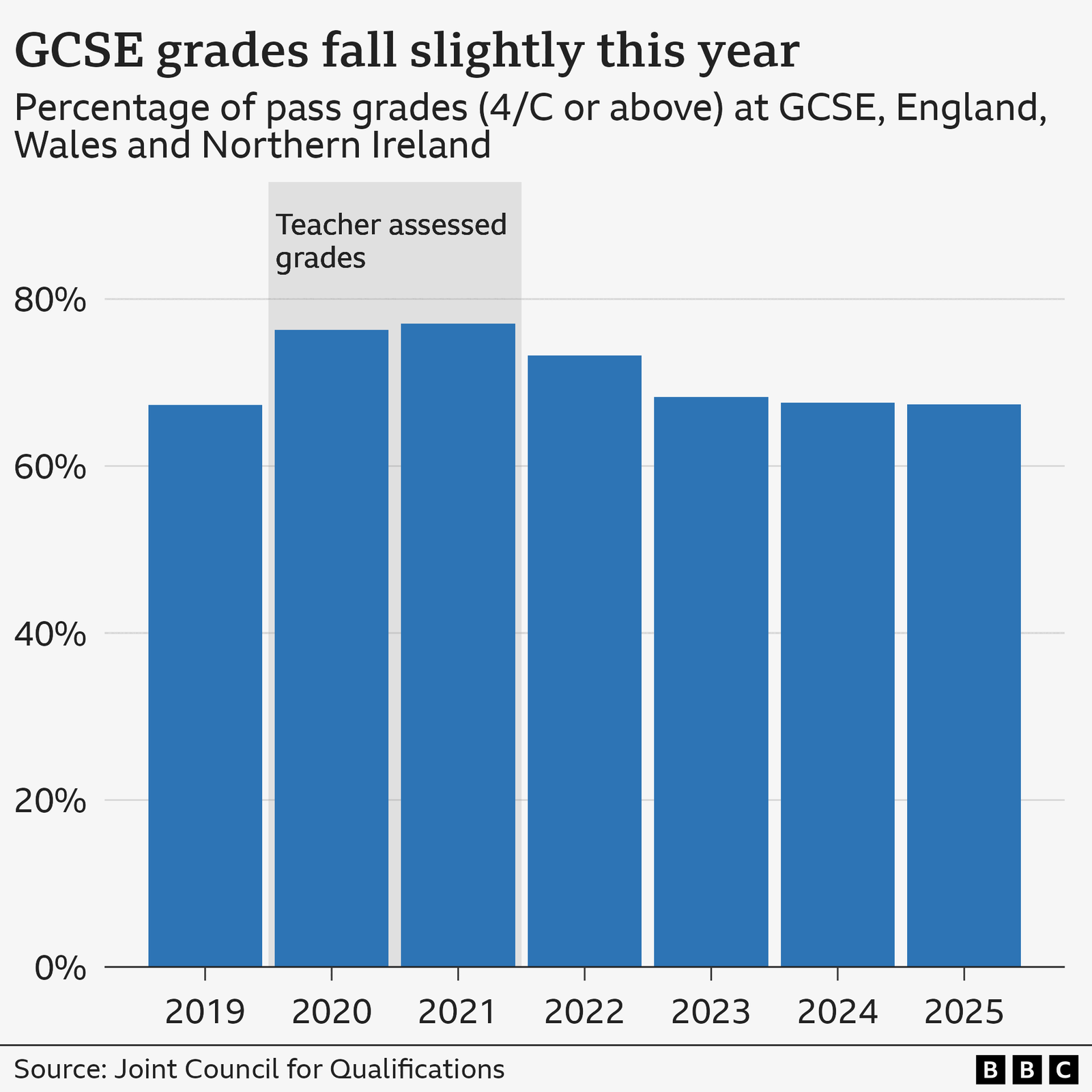
2. Resit numbers are up
Nearly a quarter of maths and English GCSEs were taken by people aged 17 and older this year.
They made up 23.4% of maths and English grades – compared to 20.9% last year.
Some will be mature students sitting exams for the first time, but most will be young people resitting papers.
Many of them will have taken their GCSEs the first time around when grades were being brought down after the pandemic, leading to fewer passes.
In England, pupils who don't get at least a grade 4 in GCSE English and maths have to continue studying for it alongside their next course - their A-levels or their T-level, for example.
The Department for Education (DfE) says pupils should retake the exam when they think they are ready - although it has been described as a requirement in the past.
The pass rate for those who resit is far lower than it is for Year 11s.
In England, just 20.9% of English entries and 17.1% of maths entries from people aged 17 and over were marked at grade 4 or higher.
Jill Duffy, the head of the OCR exam board, said there was a "resit crisis".
"Tinkering at the edges of policy won't fix this," she said. "We need fundamental reform to maths and English secondary education... to support those who fall behind."
The Association of School and College Leaders called the policy "demoralising", while the Association of Colleges said resits "can undermine confidence and motivation".
They are all waiting for the DfE to publish its curriculum and assessment review this year, which is examining the policy.
The DfE said "there is strong evidence that a minimum of a grade 4 in English and maths should continue to be the ambition for as many learners as possible".
They added that the review "is considering what measures are needed to fulfil the aims of this policy for more learners".
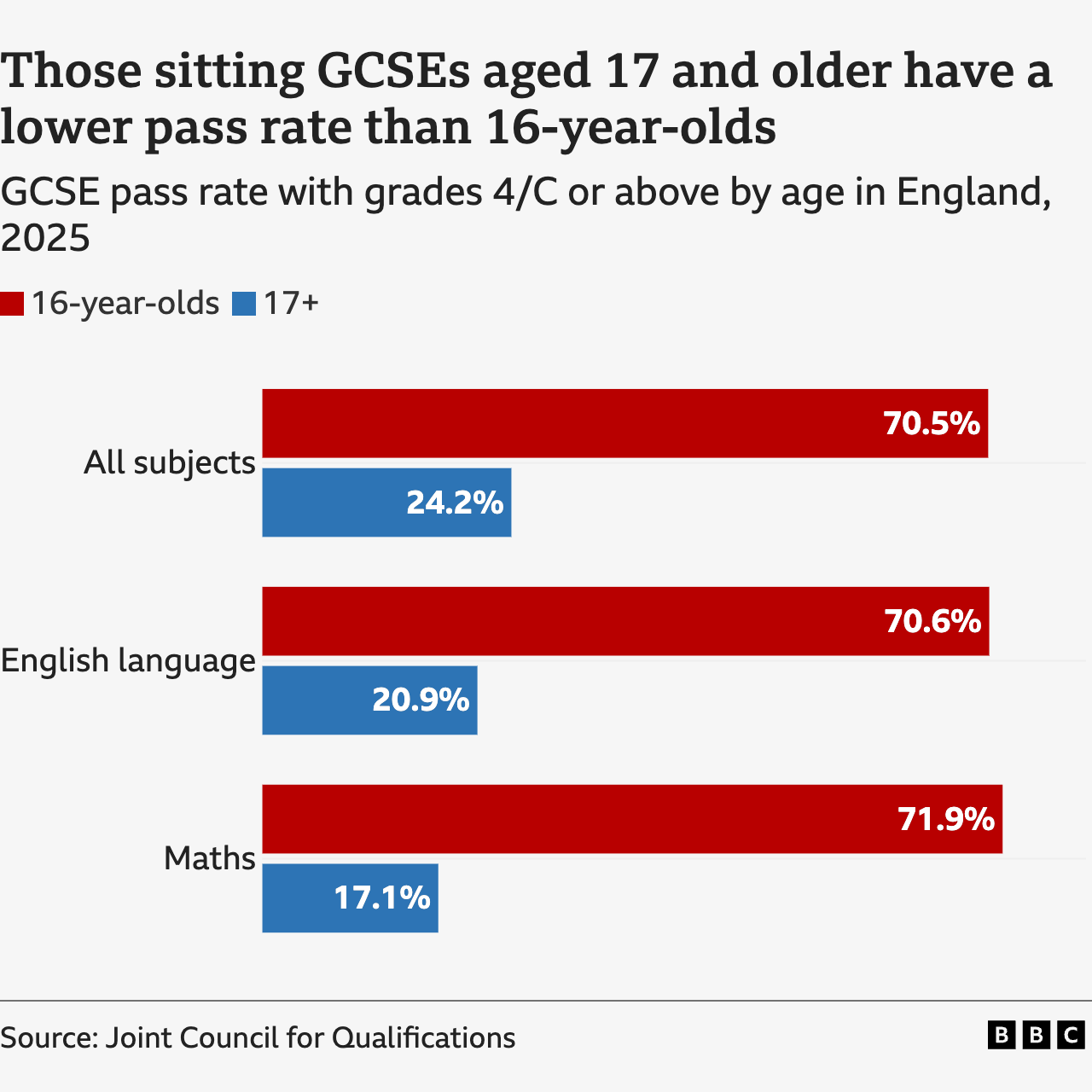
3. Regional gap shrinks, but it's still higher than before Covid
Education Secretary Bridget Phillipson warned on Wednesday that these GCSE results would "expose the inequalities that are entrenched in our education system".
We only have limited data at the moment - a breakdown of exam results by things like ethnicity and free school meal status come later in the year - but we can look at regional differences.
Like last year, London had the highest pass rate (71.6%) and the West Midlands had the lowest (62.9%).
It's the first time the gap between the highest- and lowest-performing regions has shrunk since 2021. It's 8.7 percentage points this year, down from 9.4 last year.
However, the gap is still wider than it was at any point in the decade leading up to the pandemic, when it ranged between 6.4 and 7.2 percentage points.
The narrowing of the gap this year is not because the pass rate in the West Midlands has risen (it has actually dropped slightly), but rather because it fell more steeply in London than in any other region.
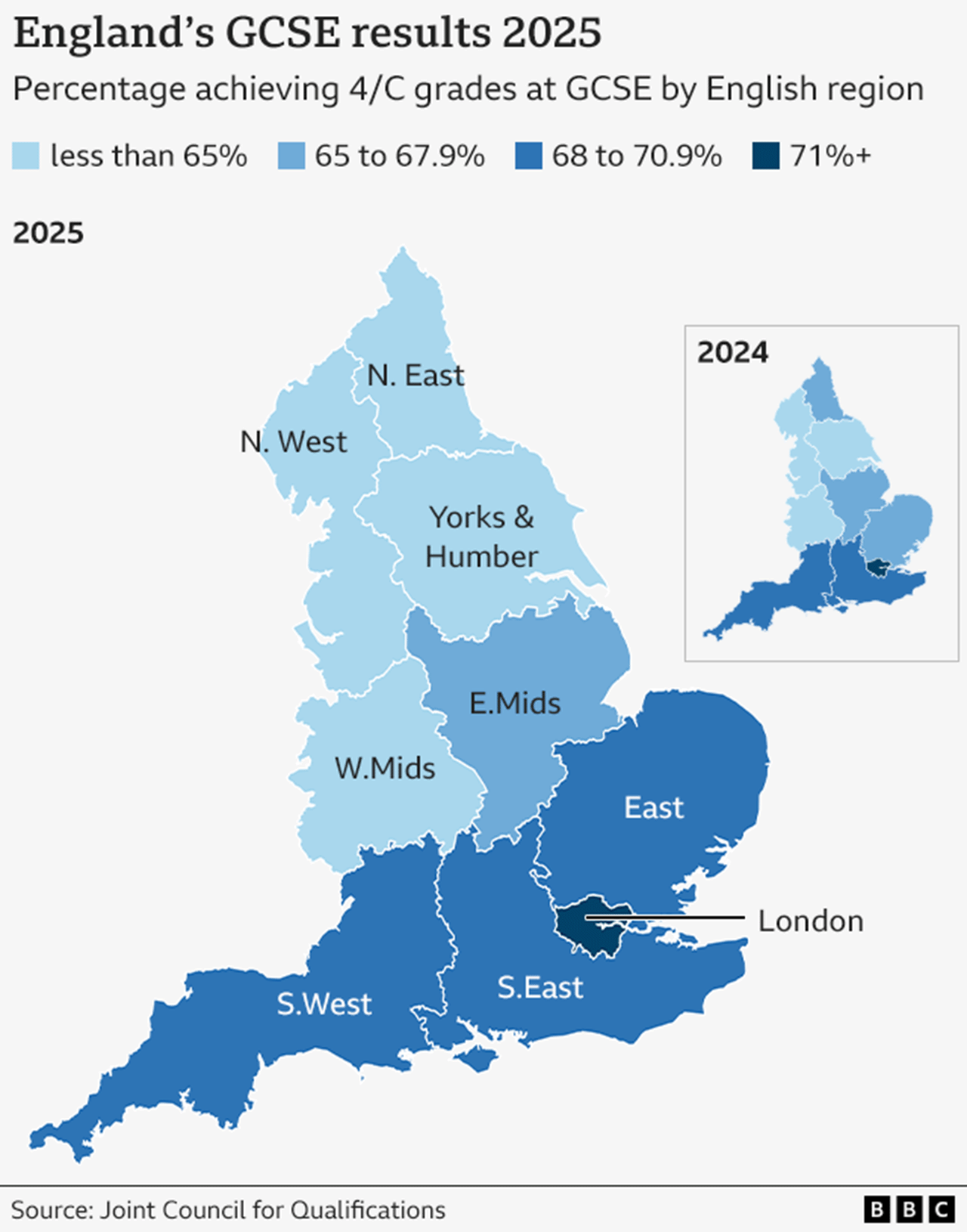
4. Gap between boys and girls is the lowest on record
The gap between boys' and girls' pass rates across all three nations has narrowed to its lowest on record.
Girls continue to outperform boys, but their grades have dropped while boys' have risen slightly.
It means there's a difference of 6.1 percentage points this year, down from 6.7 last year.
We've been looking over data that goes back all the way to 2000, and that gap is the lowest it's been at any point this century.
It was at its widest in 2017 (9.5 percentage points) and has been falling ever since.
Analysis from the Education Policy Institute, external suggests that girls' performance has been "declining in absolute terms" since the Covid pandemic.
It has linked this to "worrying trends around girls' wellbeing" such as worsening mental health and social media use.
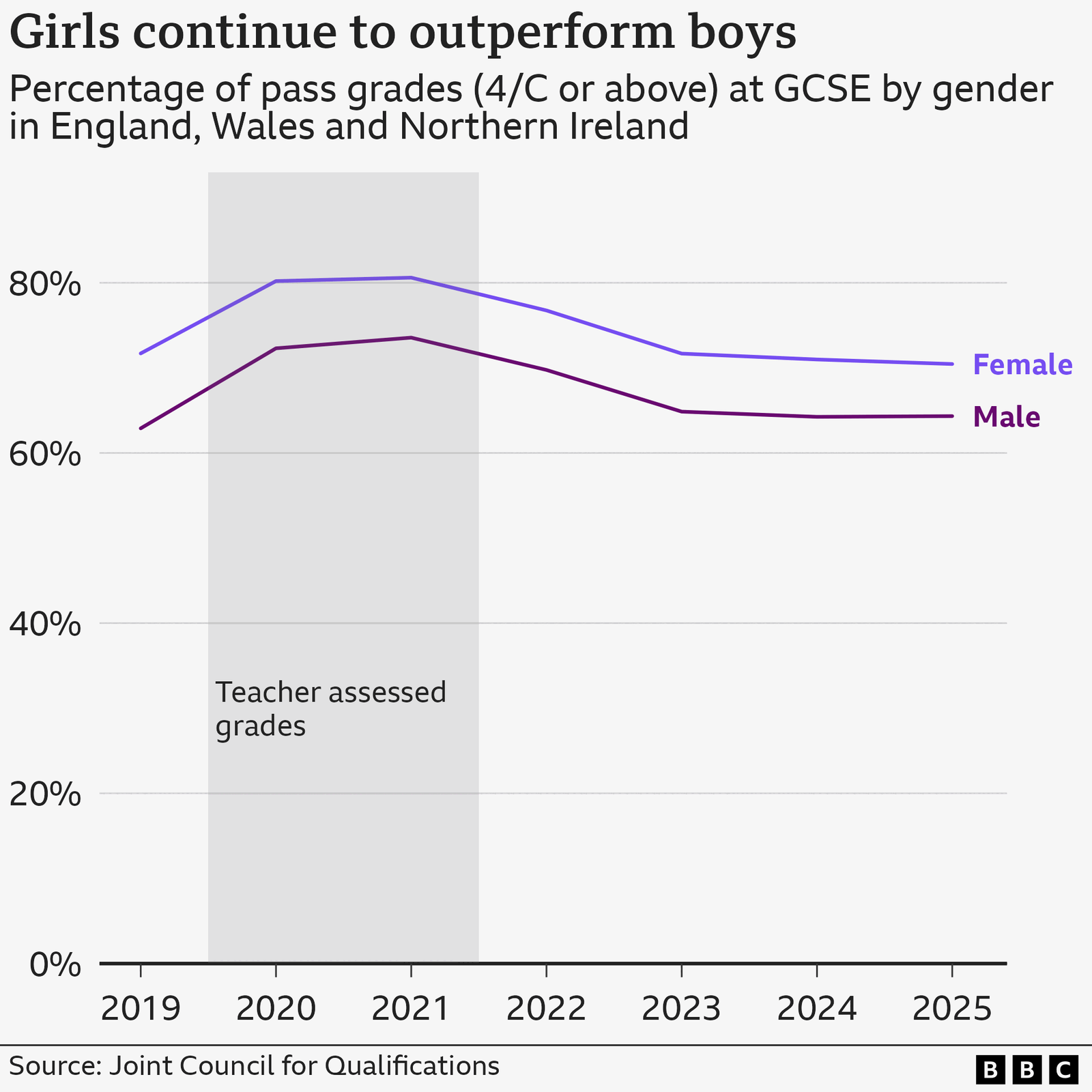
5. Au revoir French... hola Spanish
French has been a staple of British secondary education for years, but it's been overtaken by Spanish in popularity for the first time ever.
There were 136,871 entries for Spanish GCSE this year, compared to 132,808 for French.
Ms Duffy, from the OCR, said it could be because Spanish was a "massive global language" and Spain was a popular holiday destination.
One French teacher at a school in Scarborough agreed, telling the BBC that pupils associated Spanish with their favourite footballers, as well as "sunshine and holidays".
"They say they are more likely to use it when they go away," she said.
The Association of School and College Leaders said it was "great to see" Spanish becoming so popular, but the decline in entries to French and German was a "source of concern".
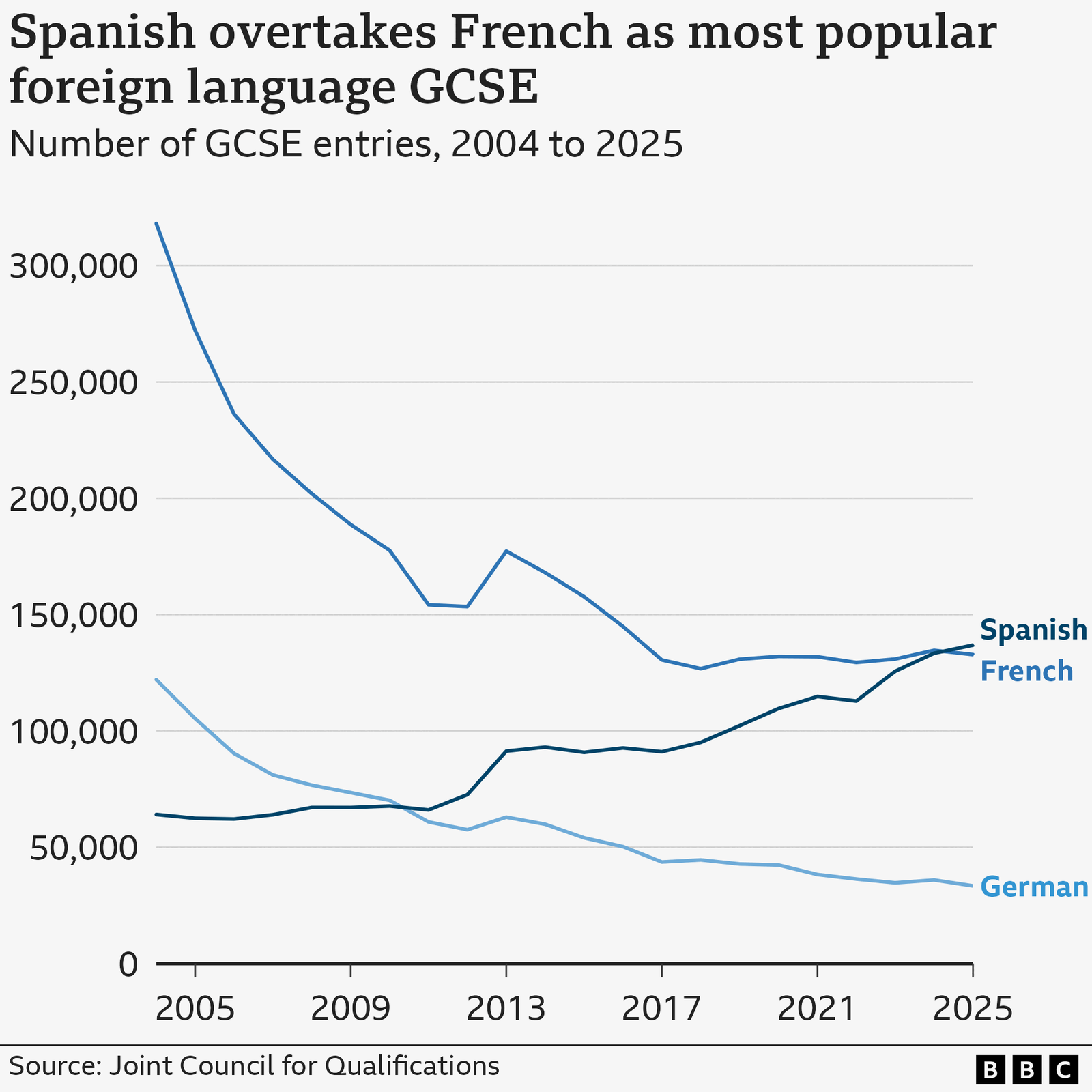
Additional reporting by Phil Leake, Libby Rogers, Muskeen Liddar, Daniel Wainwright and Jess Carr.
Get in touch
Do you need to resit your English or maths GCSE? Or have you just received your results from this summer's resit?